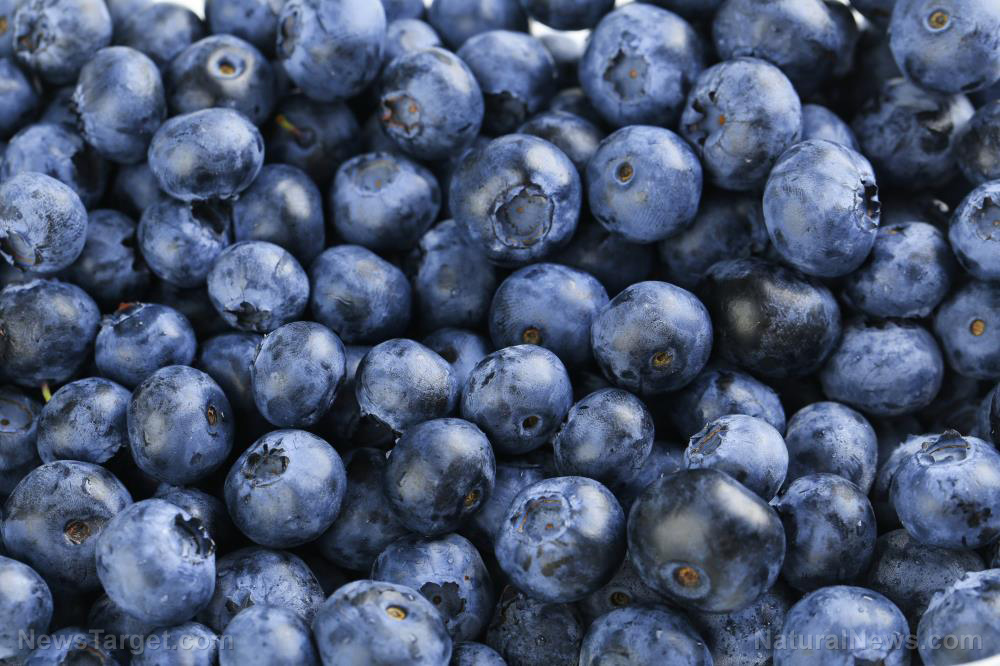Here’s a laundry list of the disease-fighting effects of anthocyanins
10/09/2018 / By Ellaine Castillo

It is often recommended to include greens in a person’s diet but people tend to forget about the red-orange and purple-blue fruits and vegetables. These foods are just as important since they are rich in anthocyanins that exhibit multiple health benefits.
In the presence of harsh conditions, such as extreme cold, drought, and ultraviolet light, plants produce anthocyanins to protect itself. Additionally, anthocyanin is also responsible for the bright colors of fruits, as well as flowers, which attracts animals and insects that help in pollination. Although anthocyanins are produced by the plants for themselves, humans can also enjoy many benefits from them. These include the following:
- Reducing weight – With two out of three Americans being overweight or obese, it has become important to search for natural compounds that can help in weight loss. Without properly addressing obesity, there is an increased risk of heart disease, diabetes, and cancer. Studies have shown that anthocyanins can help prevent obesity by producing adiponectin, which is reduced in obese individuals. It is important to normalize adiponectin levels since its deficiency has been linked to metabolic problems brought about by visceral fat accumulation. Aside from adiponectin production, anthocyanins also promote peroxisome proliferator-activated receptor (PPAR) activity, which prevents fats and sugars from building up in the bloodstream.
- Improving heart health – There are many ways through which anthocyanins promote healthy heart conditions. The first of these is by lowering levels of low density lipoprotein cholesterol while simultaneously increasing high density lipoprotein cholesterol. Aside from this, anthocyanins also help maintain the structure and function of blood vessels, which could help in regulating blood pressure. Lastly, they also prevent clotting by increasing production of beneficial nitric oxide and interfering with the platelets’ tendency to clump together.
- Preventing Alzheimer’s and Parkinson’s disease – These neurological disorders are characterized by impaired cognitive skills brought about by brain cell damage. Anthocyanins are able to prevent the development of these diseases by improving communication through the nerves and promoting sufficient blood flow to the brain. The antioxidant effect of anthocyanins also prevents oxidative stress-induced brain damage. Alzheimer’s, specifically, can be prevented through the inhibition of beta-amyloid, which is associated with the development of Alzheimer’s.
- Lowering cancer risk – Anthocyanins directly work against cancer cells by attacking them and inducing cell death. In addition to this, anthocyanins also activate enzymes that get rid of cancer-causing substances.
- Relieving inflammation – The ability of anthocyanins to reduce inflammation can be attributed to its antioxidant property and its ability to regulate gene expression of pro-inflammatory cytokines, such as COX2.
- Inhibiting diabetes – Previous studies have shown that eating anthocyanin-rich foods can reduce insulin resistance. In addition to this, anthocyanin has also been observed to protect beta-cells in the pancreas, allowing for improved production of insulin. Overall, these lead to normalized blood sugar levels.
Red and purple colored fruits and vegetables are not just beautiful on the outside, their high anthocyanin content make them beautiful on the inside as well. (Related: Why are purple foods so good for you? Learn the science of why these pigmented choices are good for heart, brain health.)
Anthocyanin-rich foods
Although they can easily be identified based on their appearance, here are some examples of anthocyanin-rich foods:
- Blueberries – Eating blueberries has been associated with improved digestion and brain function. Studies have shown that blueberries improve memory and brain power, especially in children within seven to 10 years old. Additionally, blueberries have also been observed to reduce cancer risk.
- Pomegranate – Aside from anthocyanins, pomegranates are also rich in fiber, as well as vitamins A, C, and E. The antioxidant property of pomegranate has been shown to improve bone integrity and prevent bone disorders like osteoporosis. In addition to this, pomegranate can prevent the risk of heart attack by improving blood flow and inhibiting fat build up in the bloodstream.
- Beetroot – The nutritious beetroot has been observed to improve blood flow to the brain, which could prevent neurological disorders. Aside from this, beetroot juice also relieves hypertension by lowering blood pressure.
Learn more about the different health benefits of anthocyanins by visiting Phytonutrients.news today.
Sources include:
Submit a correction >>
Tagged Under:
anthocyanin, anti-inflammatory, antioxidant, cancer, cardiovascular health, diabetes, disease prevention, flavonoid, heart attack, inflammation, obesity, overweight, purple foods, purple fruits, purple vegetables, red foods, red fruits, red vegetables
This article may contain statements that reflect the opinion of the author






















